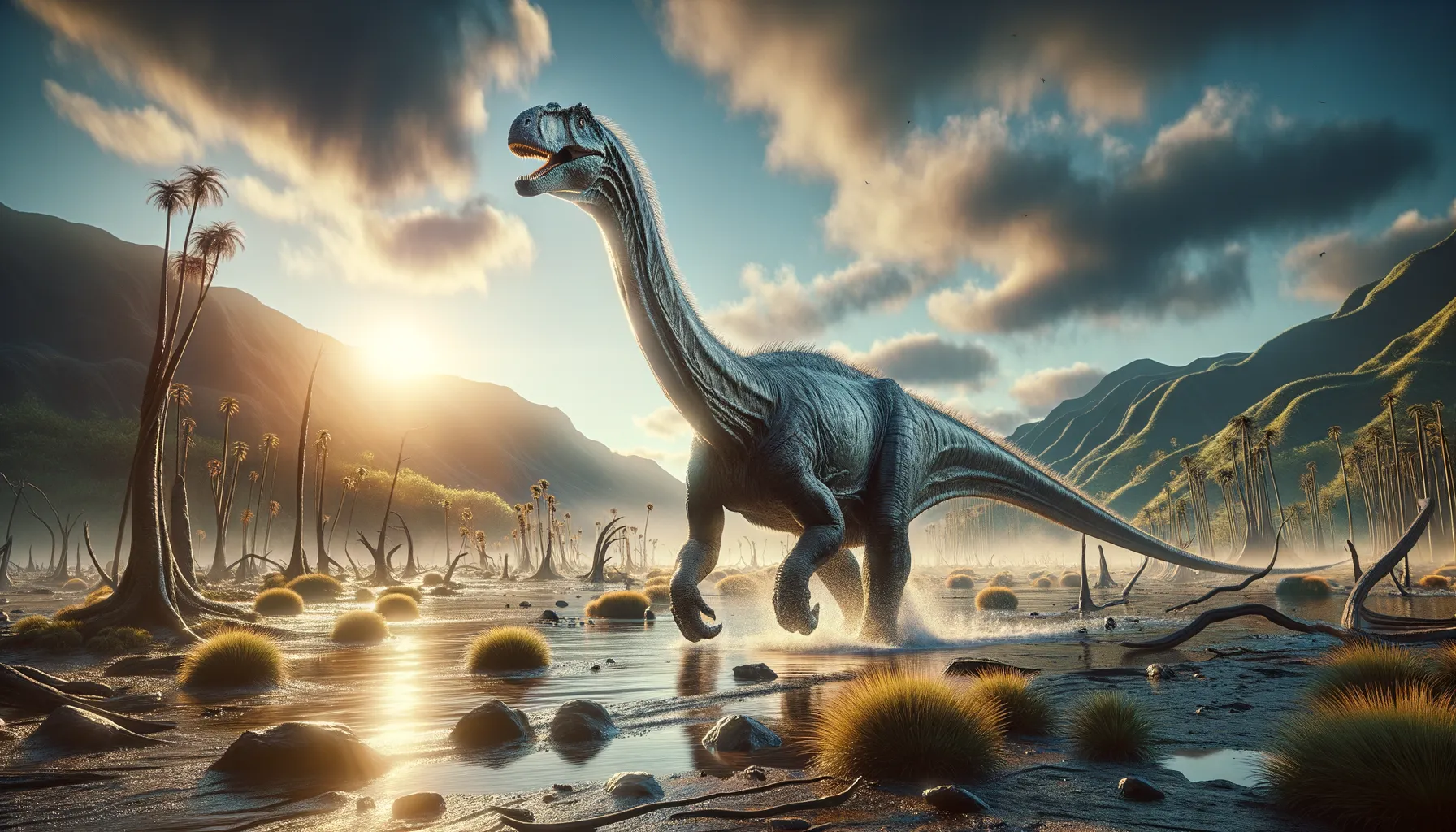
Abydosaurus
Gentle giant of the Cretaceous era.
Period
Cretaceous
Length
Up to 50 feet long.
Height
Approximately 10 feet tall at the hips.
Weight
Around 25 to 35 tons.
Abydosaurus is a sauropod dinosaur that roamed the Earth during the Early Cretaceous period. Known for its long neck and large body, this gentle giant primarily lived in what is now North America. Its discovery in Utah provided invaluable insights into sauropod diversity and evolution. The fossilized bones of Abydosaurus offer a glimpse into a world dominated by massive, plant-eating dinosaurs and highlight the abundance of life during this era.
Diet
Abydosaurus was a herbivore, feeding primarily on a variety of plants. Its long neck enabled it to reach vegetation that was otherwise inaccessible to other herbivores. The dinosaur's diet comprised mostly leafy greens, fern, and conifer leaves.
Hunting
Being a herbivore, Abydosaurus did not hunt for prey. Instead, it used its long neck to forage for plant material, often consuming vast quantities to sustain its massive body. Its primary focus was on grazing and browsing in its lush, vegetative habitat.
Environmental challenges
Abydosaurus faced challenges such as climate fluctuations which could affect the availability of food. Changes in vegetation patterns would have forced it to adapt to different plant types. Predator threats from large theropods like Tyrannosaurs were also a constant challenge, requiring Abydosaurus to rely on its size and herding behavior for protection. Environmental changes could also impact its habitat, forcing migrations in search of food and water.
Speed
Slow and steady mover.
Lifespan
Lived for several decades.
First discovery
Discovered in 2010 in Utah, USA.
Fun Facts
- Abydosaurus was a long-necked dinosaur that lived during the Early Cretaceous period.
- This dinosaur's name comes from Abydos, an ancient city in Egypt, and the Greek word 'sauros' meaning lizard.
- Abydosaurus is known from fossils discovered in Utah in the United States.
- The skull of Abydosaurus was found almost completely intact, which is rare for sauropods.
- Abydosaurus is part of the brachiosaurid family, which means it is related to the famous Brachiosaurus.
- Its teeth indicate it was a herbivore, likely feeding on high-growing vegetation.
- Abydosaurus helps scientists understand the evolution of sauropods during its time period.
Growth and Development
The growth of Abydosaurus was likely rapid during its early years, helping it quickly reach a size that was relatively safe from predators. Like other sauropods, Abydosaurus would have continued to grow throughout its life, shedding and replacing teeth as needed. Its long neck and tail supported its unique body structure, developed as it matured into adulthood.
Habitat
Abydosaurus inhabited regions with abundant vegetation and water sources, like floodplains and river valleys. These environments provided the necessary resources for its plant-based diet. The lush surroundings supported a diverse ecosystem of plant and animal life, enabling Abydosaurus to thrive alongside other dinosaurs and species. Its habitat was an environment rich with food, but also posed threats from larger carnivorous dinosaurs.
Interaction with other species
Abydosaurus likely formed herds that provided safety in numbers against predators. As a peaceful giant, it coexisted with other herbivores, sharing its habitat without major conflicts. Its presence shaped the plant communities, as its large appetite influenced vegetation patterns. The dinosaur maintained a symbiotic relationship with other creatures, contributing to the ecological balance.
Natural lifespan
It likely lived for 70 to 100 years.
Reproduction
Abydosaurus reproduced by laying eggs, likely in carefully selected nesting sites. The eggs were probably incubated by the heat of the surrounding environment or possibly by other members of its herd. Hatchlings were vulnerable and required rapid growth to survive their early years. Like other dinosaurs, parental care strategies are largely unknown, but herd behavior suggests some social support.
Social behaviour
Abydosaurus likely exhibited gregarious behavior, forming groups for enhanced protection against predators. Social structures involving cooperation in foraging and rearing young may have existed. Herding behavior provided safety and support, reflecting a social dynamic critical for survival in the Cretaceous. Interaction within these groups was essential for maintaining balanced roles in the ecosystem.
Fossil locations
The primary fossil location for Abydosaurus is in eastern Utah, USA, at Dinosaur National Monument. The discovery included a well-preserved skull, which is rare for sauropods, providing significant insights into its anatomy. Fossils of Abydosaurus add depth to the understanding of dinosaur distribution in North America. This site's fossil findings contribute extensively to paleontological research on sauropods.
